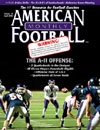AMERICAN FOOTBALL MONTHLY THE #1 RESOURCE FOR FOOTBALL COACHES
Article CategoriesAFM Magazine
|
Developing a Passing Attack that Fits Your Plans and Playersby: Charlie StubbsFormer Offensive Coordinator, University of Louisville © More from this issue Throughout my twenty-nine years in the profession, I have had the opportunity to coach at both the collegiate and high school levels. During that time, I have had the pleasure of working with various coaching staffs that have helped me formulate my philosophies on dealing with the passing game. At the same time, I have had many athletes with various ranges in athletic abilities. Therefore, I have had to adapt each year to the specific situation. When you are developing a passing attack, it is important to build a system that fits your athletes’ abilities and to get your best 11 players on the field! Remember: A Style Of Your Own! Evaluate Your Personnel It is important to evaluate all of your offensive positions, not just the quarterback. This will enable you to blend their strengths together to ge....The full article can only be seen by subscribers. Subscribe today!
|
|
|||||||
| HOME |
MAGAZINE |
SUBSCRIBE | ONLINE COLUMNISTS | COACHING VIDEOS |
Copyright 2025, AmericanFootballMonthly.com
All Rights Reserved





